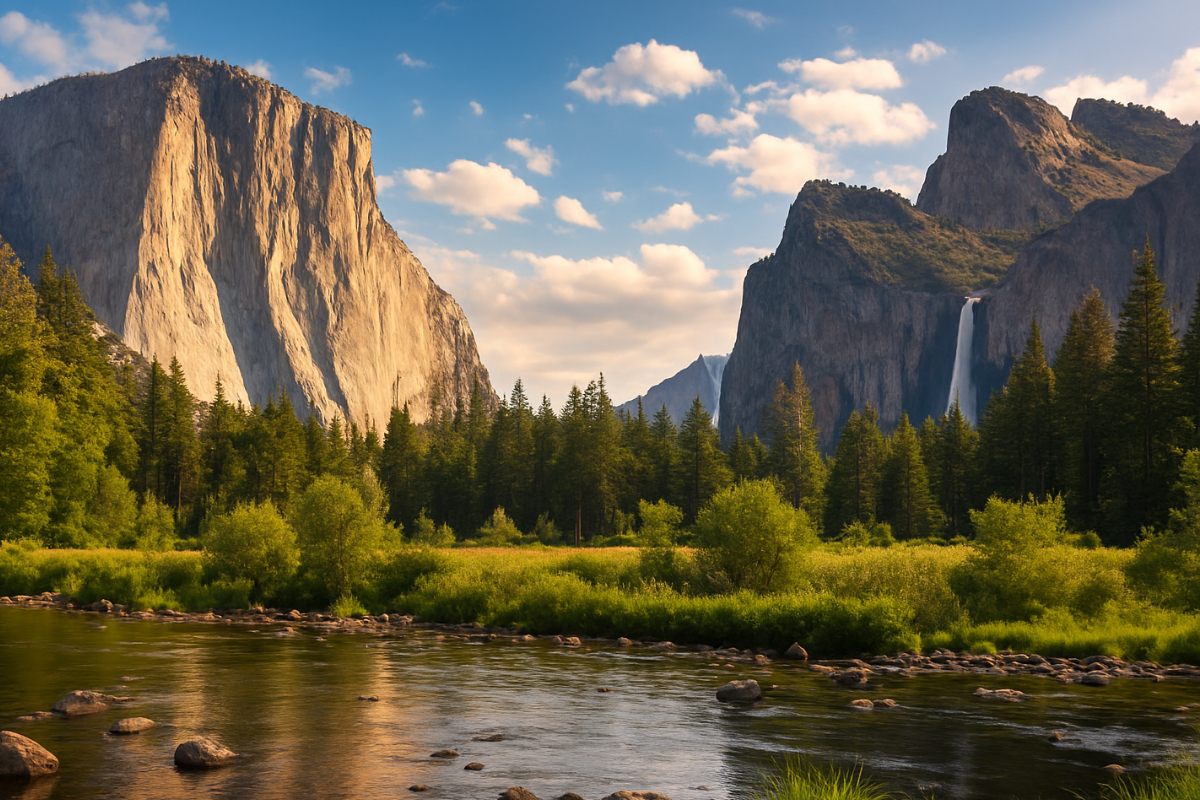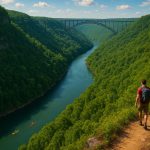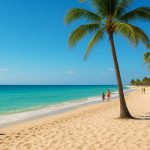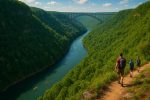The United States is home to some of the most breathtaking natural landscapes in the world, and U.S. national parks play a major role in preserving these wonders. From towering mountains to serene lakes and dense forests, these parks offer a unique way to experience nature. Each park tells a story, protecting ecosystems, wildlife, and historic sites for visitors to enjoy.
Whether you’re planning a weekend getaway or mapping out a cross-country adventure, understanding how many national parks exist and what makes them special is essential. Some travelers, for instance, might be drawn to the dramatic cliffs and winding rivers of New River Gorge National Park, showcasing just one example of the country’s diversity in protected areas.
Let’s take a closer look at what these parks offer and how they are spread across the U.S.
Quick Insights into U.S. National Parks
Before diving into the details, it helps to get a snapshot of what makes national parks in the U.S. so remarkable. They are not just scenic destinations; they also preserve history, wildlife, and unique landscapes for generations. Here’s a quick overview:
- The United States currently has 63 official national parks, with each offering a unique experience.
- Parks vary widely in size, from small preserves like Hot Springs in Arkansas to vast expanses such as Wrangell-St. Elias in Alaska.
- They are distributed across every region, from the rocky peaks of the West to the coastal wetlands of the Southeast.
- Many parks provide educational programs, hiking trails, and opportunities for wildlife observation, making them perfect for families and solo travelers alike.
- Planning your visit often depends on the time of year, region, and what activities interest you most.
This snapshot captures why national parks are more than just beautiful places; they’re living treasures of the U.S.
How Many U.S. National Parks Exist Today
The total number of national parks in the United States is currently 63, though the National Park System encompasses many other protected sites, including monuments, preserves, and historic areas. Understanding the distinction is important: while all national parks are part of the system, not all protected areas receive the national park designation.
The Designation Process
National parks are established by Congress to protect significant natural, scenic, and cultural resources. This process ensures that areas with exceptional landscapes or historic importance receive the highest level of federal protection. Unlike national monuments or recreation areas, national parks typically have stricter regulations to preserve their ecosystems and limit development.
Historical Background
The National Park System began with Yellowstone in 1872, marking the first officially designated national park in the world. Since then, parks have been added across the country, reflecting the diversity of American landscapes, from the deserts of Utah to the rainforests of Hawaii. Each park preserves not only natural beauty but also a piece of the nation’s history.
Popular Parks Across the Country
While every national park is worth visiting, some have become iconic destinations. Their popularity often stems from dramatic landscapes, recreational opportunities, or historical significance.
East Coast Highlights
The East Coast offers parks with stunning fall foliage, rugged coastlines, and peaceful trails. For example, if you plan to travel to Maine, you might want to visit Acadia National Park, where rocky shores meet dense forests, and sunrise over Cadillac Mountain is a must-see experience.
Western Wonders
The Western U.S. is home to some of the country’s most famous parks, including Yosemite, Grand Canyon, and Yellowstone. Here, visitors can witness geysers, massive rock formations, and expansive valleys, making each visit unforgettable.
Other Notable Parks
Parks like Glacier, Zion, and Everglades provide a mix of mountains, canyons, and wetlands. These locations demonstrate the remarkable ecological and geographic variety found within the national park system.
U.S. National Parks by Region
Organizing parks by region can help travelers plan trips more efficiently and make the most of their time. Each area of the country offers a unique mix of landscapes, wildlife, and experiences, from mountains and forests to deserts and wetlands. Understanding where parks are located also helps visitors prioritize destinations that match their interests and travel style.
Western United States
The West has many large and famous parks. California, in particular, offers a wide range of landscapes. Visitors looking for stunning sequoias or dramatic cliffs will find numerous places to visit in California that include both national parks and other protected areas.
Midwest and Central
The Midwest features parks such as Badlands, Isle Royale, and Cuyahoga Valley. These parks provide opportunities for hiking, wildlife spotting, and scenic drives, making them appealing for weekend visits or road trips.
Eastern United States
From Shenandoah to the Great Smoky Mountains, the East offers forests, rolling hills, and historic sites. These parks are especially accessible for travelers on shorter trips or those visiting multiple destinations along the coast.
Southern United States
Southern parks, like Everglades and Big Bend, highlight unique ecosystems and offer experiences distinct from the mountainous or forested regions. Visitors can enjoy wetlands, deserts, and tropical landscapes all in one region.
Planning Your Visit to U.S. National Parks
Visiting a national park can be a rewarding experience, but some preparation ensures a smoother trip. Knowing when to go, what to pack, and how to access resources is crucial.
Timing Your Trip
Many parks have peak seasons based on weather and visitor traffic. For example, autumn is ideal for seeing foliage in the Northeast, while spring may be best for wildflower blooms in the Southwest.
Resources and Passes
Purchasing passes in advance and checking park-specific guidelines can make the experience easier. Many parks offer maps, educational programs, and ranger-led activities to enhance your visit.
For detailed maps, trail information, and the latest park alerts, check the official National Park Service website. This resource is invaluable for both first-time visitors and experienced travelers, ensuring you make the most of your park adventures.
Experiencing the Beauty of U.S. National Parks
From coast to coast, U.S. national parks preserve some of the most remarkable landscapes in the world. Whether hiking in a desert, watching wildlife in a forest, or photographing dramatic mountain vistas, each park provides a unique opportunity to connect with nature. Planning ahead and choosing parks that match your interests can make every visit memorable. These protected areas are more than just destinations; they are places to reflect, recharge, and enjoy the natural world responsibly.
No matter which park you choose to visit first, the diversity and beauty of the U.S. national parks system ensures that there is always something new to see and experience.











